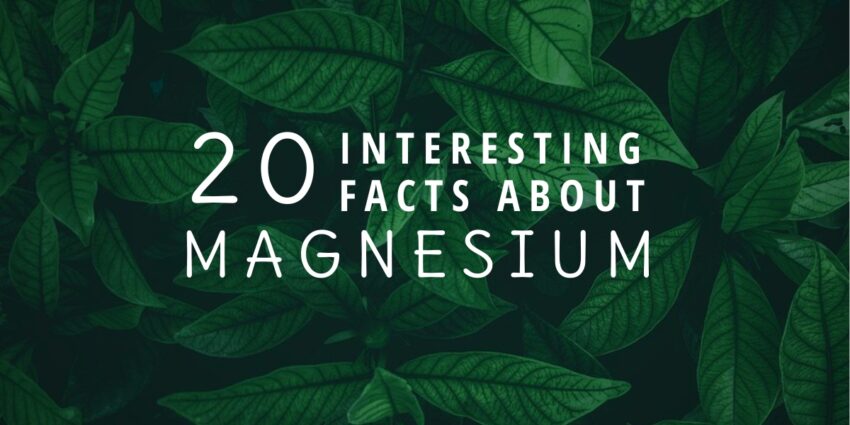Named for the Greek city of Magnesia, magnesium is an silvery-white alkaline earth metal essential for animal and plant nutrition. Magnesium in plants is located in the enzymes, in the heart of the chlorophyll molecule. Without magnesium, chlorophyll cannot capture sun energy needed for plant photosynthesis.
As a Critical Resource Mineral and essential geopolitical commodity, magnesium’s principal use is as an alloying addition to aluminum. These aluminum-magnesium alloys are used in products such as automobiles, aircraft, and machinery. The low density of magnesium is especially important for gravity-cast military and aerospace applications, including helicopter gear housings, aircraft canopy frames, air intakes, engine frames, speed brakes, and auxiliary component housings. Not only that, but magnesium is used as a catalyst for producing petrochemicals and as a reducing agent for producing metals such as titanium, zirconium, hafnium, beryllium, and uranium.
Magnesium is also used in wrought form in products such as extrusions, forgings, sheet, and plate. Applications for these products range from bakery racks and hand trucks to nuclear fuel element containers and aerospace assemblies. As one can see, magnesium is an essential mineral for national sovereignty.
Beyond the basics above, what else should we know about magnesium? Check out the 20 interesting facts below!
- In the 1600’s, water from the famous Epson spring discovered in England was a popular curative, used as an internal remedy and purifier of the blood. In 1695, magnesium sulfate as a salt was isolated from the Epsom spring water by Nehemia Grew.
- Magnesium was first recognized as an element in 1755 by Joseph Black.
- In 1795, J.C. Delanethrie applied the term “magnesite” to a series of magnesium salts (carbonate, sulfate, nitrate, and chloride), and A. Brongmart applied the same term to a group of minerals including magnesium carbonates and silicates.
- Magnesium metal was first isolated by chemist Sir Humphry Davy in 1808 by reduction of magnesium oxide with potassium vapor.
- In 1831, French chemist Antoine Bussy was the first to create a significant amount of pure magnesium.
- In 1833, Michael Faraday obtained magnesium by the electrolysis of fused anhydrous magnesium chloride.
- In 1852, Robert Bunsen developed an electrolytic cell for the purpose of obtaining magnesium.
- The first industrial production of magnesium was undertaken in France by Deville and Caron in 1863 and involved reduction of a mixture of anhydrous magnesium chloride and calcium fluoride by sodium.
- In 1886, deposits of magnesite were discovered in California.
- By 1890, magnesite was in general use in Europe for refractory linings in Bessemer and open-hearth furnaces. In 1890, magnesite mines were opened in Canada.
- The first magnesium plant in the United States was constructed by the General Electric Co. at Schenectady, NY, in 1914.
- Richard Willstatter won the Nobel prize in 1915 for describing the nature of the structure of chlorophyll in plants, noting magnesium as the central element.
- Magnesium production in the United States experienced a sharp increase during World War II because of the use of magnesium in incendiary bombs. The U.S. Government constructed 13 magnesium metal plants between 1940 and 1943 to supply magnesium for the war. Shortly after the end of the war, these plants were either closed or sold to private industry.
- In May 2018, the U.S. Department of the Interior, in coordination with other executive branch agencies, published a list of 35 critical minerals (83 FR 23295), including magnesium. This list was developed to serve as an initial focus, pursuant to Executive Order 13817, ‘‘A Federal Strategy to Ensure Secure and Reliable Supplies of Critical Minerals” (82 FR 60835).
- U.S. Production & Consumption: Seawater and natural brines accounted for about 57% of U.S. magnesium compound production in 2018. In 2018, About 60% of the magnesium compounds consumed in the United States were used in agricultural (ex: animal feed and fertilizer), chemical (ex: stabilizing agent in rubber), construction (ex: suppressant for dust on dirt roads), environmental, and industrial applications (ex: pulp and paper processing). The remaining 40% was used for refractories in the form of dead-burned magnesia, fused magnesia, and olivine for producing iron, steel, glass, cement, and more.
- China is by far the leading global producer of magnesium, responsible for about 80 percent of the world’s supply.
- Magnesium is highly recyclable. At the same time, magnesium is not found on Earth as a free element.
- Aluminum cans contain about 2.5% magnesium. The advent of the aluminum can also had a significant impact on secondary magnesium.
- Magnesium is the eighth most abundant element on Earth and constitutes about 2 percent of the Earth’s crust. It is the third most plentiful element dissolved in seawater, with a concentration averaging 0.13 percent. Magnesium is the ninth most abundant element in the universe.
- Magnesium is the 11th most abundant element in the human body, by mass, and magnesium ions are found in every cell in the body. In fact, magnesium is one of six “macro-minerals”, major minerals needed by the body in larger amounts. The other five major minerals are calcium, sodium, potassium, phosphorous and chloride.
